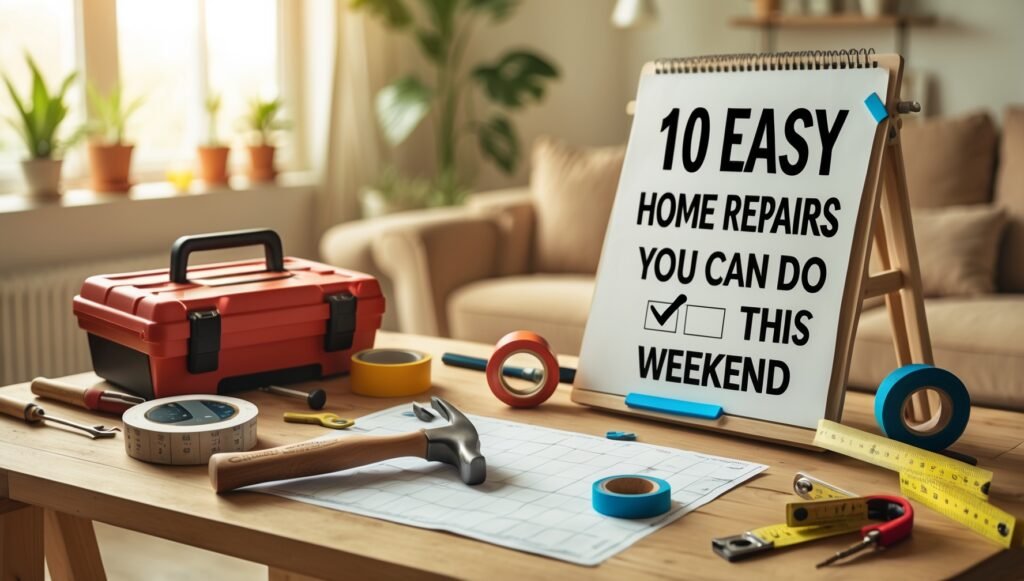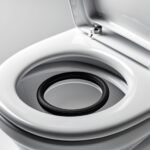
Home repairs don’t always require a professional, and sometimes the best way to fix things around the house is to do it yourself. Whether you’re dealing with a leaky faucet or a cracked wall, there are plenty of simple repairs you can tackle this weekend. Not only will this save you money, but it will also help you maintain your home and keep things running smoothly. This blog will walk you through 10 easy DIY home repairs you can do yourself in a weekend.
1. Fix a Leaky Faucet
Problem: A leaky faucet is one of the most common home issues, wasting water and driving up your water bill.
How to Fix It: Start by turning off the water supply under the sink. Use a wrench to remove the handle and then unscrew the packing nut. Replace the washer inside the faucet with a new one. Reassemble the faucet and turn the water back on. Tighten everything and test for leaks.
Why It’s Important: Fixing a leaky faucet is a quick repair that prevents wasted water, which not only saves money but also conserves this vital resource.

2. Patch a Hole in the Wall
Problem: Hole In The Wall can be unsightly and are often caused by accidents or general wear and tear.
How to Fix It: Clean the area around the hole and apply a patching compound. Smooth it with a putty knife and allow it to dry. Sand the patched area to make it smooth and level, then paint to match the wall. For larger holes, you may need a wall patch, which you can easily apply using the same steps.
Why It’s Important: Patching holes not only restore the look of your walls but also prevent further damage and improve your home’s appearance.

3. Replace a Broken Tile
Problem: A cracked tile can be an eyesore, especially in high-traffic areas like kitchens and bathrooms.
How to Fix It: Start by removing the broken tile using a chisel and hammer. Clean the area and apply a thin layer of adhesive. Press the new tile into place, making sure it’s aligned with the others. Let it dry, then apply grout around the edges.
Why It’s Important: Replacing broken tiles improves the aesthetic of your floors or walls and prevents dirt and moisture from seeping through the cracks.
[Insert Image Here: A cracked tile on the floor and the tools needed to replace it]
4. Fix a Running Toilet
Problem: A running toilet wastes water and can lead to higher water bills.
How to Fix It: Open the tank and check the flapper for wear or misalignment. If it’s damaged, replace it with a new one. Adjust the float to the correct water level and check the fill valve to ensure it’s working properly.
Why It’s Important: A running toilet can waste gallons of water every day, so fixing it not only saves you money but also helps conserve water.

5. Repair or Replace Caulking Around the Bathroom Sink
Problem: Over time, bathroom caulk can become moldy, cracked, or discolored, causing water to leak under your sink.
How to Fix It: Use a caulk remove tool to take off the old caulking. Clean the area thoroughly and apply a new bead of silicone caulk around the sink. Smooth the caulk with a wet finger and let it cure for 24 hours.
Why It’s Important: Replacing old caulk prevents water damage, mold growth, and keeps your bathroom looking fresh.
6. Install a New Showerhead
Problem: A low-pressure or old showerhead can make your showering experience uncomfortable.
How to Fix It: Unscrew the old showerhead and replace it with a new one. You may need a wrench to remove it, and when installing the new one, wrap the threads with Teflon tape to prevent leaks.
Why It’s Important: Upgrading to a new showerhead can improve water pressure and create a more enjoyable, efficient shower experience.
7. Fix Creaking Floorboards
Problem: Creaking floors can be annoying, especially in high-traffic areas like hallways or bedrooms.
How to Fix It: Locate the source of the creak, then use screws to secure the loose floorboard. Apply wood glue between the boards to hold them together. For subfloor creaks, you may need to screw into the joists below.
Why It’s Important: Fixing creaking floors not only stops the noise but also stabilizes your floor and prevents further damage.
8. Replace a Door Handle
Problem: A broken or loose door handle is both inconvenient and can make your home feel less secure.
How to Fix It: Remove the old door handle by unscrewing the screws that hold it in place. Align the new handle with the holes and secure it with screws. Check if the latch is functioning properly.
Why It’s Important: Replacing door handles enhances both the security and aesthetic of your home. It’s a simple repair that can make a big difference.
9. Tighten Loose Cabinet Hardware
Problem: Cabinet handles and knobs can become loose over time because of daily use, making your kitchen or bathroom look worn out.
How to Fix It: Simply use a screwdriver to tighten the screws that hold the hardware in place. If the screws become stripped, replace them with new ones.
Why It’s Important: Tightening cabinet hardware helps keep your kitchen and bathroom functioning properly and looking neat.
10. Seal Gaps in Windows or Doors
Problem: Drafts from poorly sealed windows and doors can lead to higher energy costs, as your HVAC system has to work harder to maintain the temperature.
How to Fix It: Inspect the seals around windows and doors. Apply weatherstripping or caulk to any gaps or cracks. For larger gaps, consider using foam sealant.
Why It’s Important: Sealing gaps improves energy efficiency, keeps your home comfortable, and lowers your energy bills.
These 10 easy DIY home repairs are simple, affordable, and can all be completed over a weekend. Whether it’s fixing a leaky faucet or upgrading your showerhead, completing these tasks will not only save you money but also increase your home’s value and comfort. You don’t need to be a professional to tackle these projects—just the right tools, some time, and a bit of patience.
For more in-depth DIY tips and tricks, check out our DIY Home Repair Mastery ebook for step-by-step guides on handling all your home repair needs. Also, check out our Fix It Before It Breaks guide for more ways to prevent costly home repairs.
FixItSmartly.com helps everyday people save money and build confidence by tackling home and car repairs with easy, practical DIY solutions. Live smart, safe, and self-reliant — one fix at a time.
Copyright © 2025 Fixitsmartly